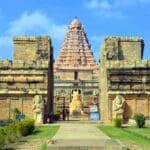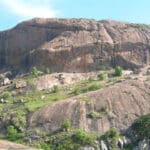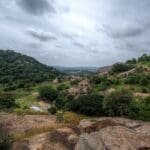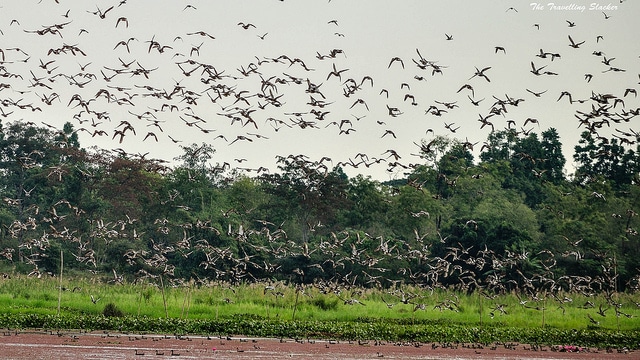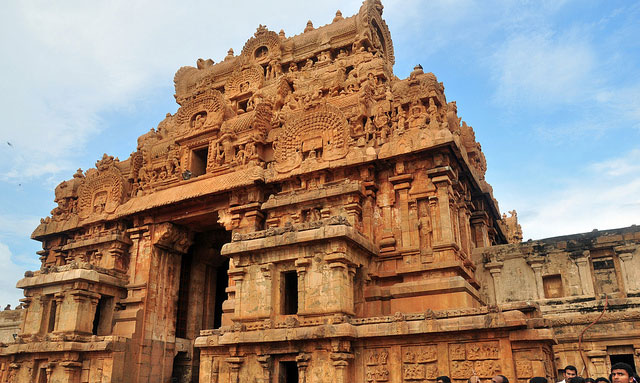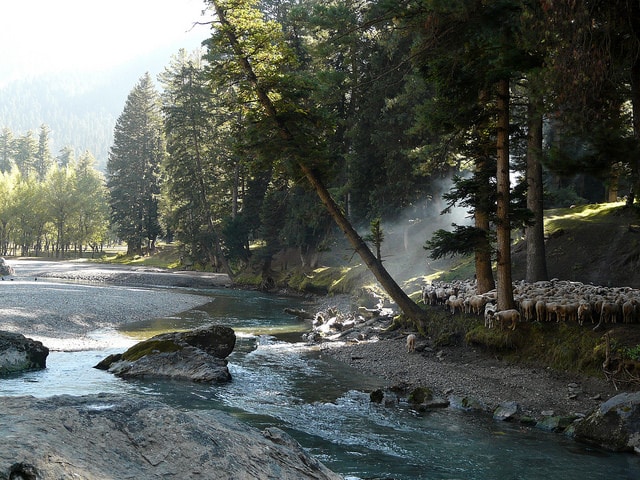Nestled in the heart of Madhya Pradesh, Kanha National Park stands as one of the most iconic wildlife sanctuaries in India. Covering an area of over 940 square kilometers, this rich ecosystem is home to a diverse range of wildlife species, including the majestic Royal Bengal Tiger, the Indian Leopard, and the Indian Wild Dog (Dhole). Kanha is not only famous for its rich biodiversity but also for its stunning landscapes, making it a haven for nature lovers, wildlife photographers, and adventure seekers alike.
In this article, we explore the significance of Kanha National Park, its diverse flora and fauna, how to plan your visit, and the best time to explore this wildlife paradise.
Why Visit Kanha National Park?
1. Home to the Royal Bengal Tiger
Kanha National Park is renowned for being one of the best places in India to spot the elusive Royal Bengal Tiger. The park has been instrumental in the conservation of this majestic big cat through its successful Project Tiger initiative. The vast grasslands and dense forests offer the perfect habitat for these apex predators, and visitors have a high chance of witnessing tigers in their natural habitat. The park is known for its efforts to maintain the balance of the ecosystem while protecting the tiger population.
Tiger Safaris in Kanha
For those hoping to catch a glimpse of the Royal Bengal Tiger, the safari experience in Kanha is second to none. The park offers morning and afternoon safaris, both in open jeeps and canters, guided by expert naturalists. The safaris take visitors through different zones of the park, providing ample opportunities to spot tigers and other wildlife.
2. Diverse Wildlife Species
Beyond tigers, Kanha National Park boasts an impressive array of other wildlife species, including:
- Leopards: The elusive Indian leopard can also be spotted in the park, adding to the excitement of a safari.
- Indian Bison (Gaur): The world’s largest wild cattle, the Gaur, roams freely in the park’s grasslands and dense forests.
- Sloth Bears: These nocturnal creatures can sometimes be seen foraging in the early morning or late evening hours.
- Cheetal and Sambar Deer: Common prey for the tigers, these herbivores are abundant in the park.
- Wild Dogs (Dholes): The park is also home to the Indian Wild Dog, a social carnivore that hunts in packs.
The diverse range of species in Kanha makes it a paradise for wildlife enthusiasts and photographers. Visitors can also spot numerous species of birds, reptiles, and insects, adding to the park’s ecological significance.
3. Scenic Beauty and Rich Landscapes
Kanha is not just a wildlife sanctuary; it is also a place of unparalleled natural beauty. The park is divided into several distinct zones, including dense sal forests, lush grasslands, and open meadows. The Kisli and Mukki zones are particularly popular for safaris, offering wide open spaces and breathtaking views of the surrounding hills and valleys.
The Kanha and Banjar River that meander through the park further enhance its scenic beauty. The riverbanks are often frequented by animals coming to drink water, and the sight of tigers, deer, and other wildlife near the water adds to the magical experience of a safari.
4. Conservation and Eco-Tourism
Kanha National Park is a model of conservation success. With the support of various organizations and government initiatives like Project Tiger, the park has seen a rise in its tiger population and other wildlife species. The park’s eco-tourism efforts also focus on sustainable tourism practices, with efforts to minimize human impact on the ecosystem.
Visitors are encouraged to respect the park’s rules, including maintaining silence during safaris, staying inside vehicles, and not disturbing the wildlife. These conservation efforts help maintain the delicate balance of the park’s natural environment while providing a memorable experience for nature lovers.
Best Time to Visit Kanha National Park
The best time to visit Kanha National Park depends on the type of experience you’re looking for. Here’s a detailed breakdown:
1. Winter (October to March)
The winter months (October to March) are the most popular time to visit Kanha. The weather is cool and pleasant, making it ideal for safaris. The temperature ranges from 7°C to 30°C, providing a comfortable experience for wildlife enthusiasts. During this period, animals are more active as they venture out to drink water in the early mornings and evenings.
This is also the best time for tiger sightings, as the cooler weather encourages more movement across the park. The clear skies and mild temperatures make for a pleasant safari experience.
2. Summer (April to June)
The summer months (April to June) are considered the off-season for Kanha due to the soaring temperatures, which can reach up to 40°C. However, summer is also a prime time for wildlife sightings, especially tigers. As water becomes scarce in the park, animals gather around the few remaining water sources, increasing the chances of spotting predators.
If you’re prepared for the heat, the summer months offer a unique experience with fewer tourists and more opportunities to see wildlife in action.
3. Monsoon (July to September)
The monsoon season (July to September) brings heavy rainfall to the park, making it less ideal for safaris. Many of the park’s roads become inaccessible, and safaris are closed during this period. However, the monsoon transforms the park into a lush green paradise, and if you’re not keen on safaris, the monsoon months can offer a peaceful escape into nature.
How to Reach Kanha National Park
By Air
The nearest airport to Kanha National Park is Jabalpur Airport, which is about 165 kilometers away from the park. The airport is well connected to major cities like Delhi and Mumbai. From Jabalpur, you can hire a taxi or take a bus to reach the park.
By Train
The nearest railway station to Kanha is Jabalpur Railway Station. It is well connected to major cities in India, and you can easily find trains to Jabalpur from cities like Delhi, Mumbai, and Kolkata. From Jabalpur, you can travel to the park by road.
By Road
Kanha National Park is well connected by road to major cities like Jabalpur, Nagpur, and Raipur. The park can be accessed by car or taxi from these cities.
Things to Do in and Around Kanha National Park
- Safari Tours: The highlight of any visit to Kanha is the thrilling safari experience. You can opt for jeep safaris or canter safaris, with naturalists guiding you through the park’s diverse zones.
- Nature Walks: For those interested in exploring the park on foot, nature walks with local guides are a great way to learn more about the flora, fauna, and conservation efforts.
- Visit Kanha Museum: Located near the park entrance, the Kanha Museum offers a wealth of information about the park’s wildlife, history, and conservation programs.
- Photography: Kanha’s landscapes, wildlife, and diverse ecosystems make it a photographer’s paradise. Capture stunning shots of tigers, leopards, and other wildlife against the backdrop of the park’s beautiful scenery.
Conclusion
Kanha National Park is a treasure trove of wildlife, scenic beauty, and ecological significance. With its rich biodiversity, conservation efforts, and stunning landscapes, the park offers an unforgettable experience for nature lovers and wildlife enthusiasts. Whether you’re looking to spot a Royal Bengal Tiger, trek through lush forests, or simply soak in the beauty of the natural surroundings, Kanha is a destination that should be on every traveler’s bucket list.
frequently asked questions (FAQs) about Kanha National Park, Madhya Pradesh:
1. What is Kanha National Park known for?
Kanha National Park is renowned for its rich biodiversity, particularly its conservation of the Royal Bengal Tiger. It is also home to other species like the Indian Leopard, Sloth Bear, Wild Dogs (Dholes), and the Indian Bison (Gaur). The park is one of the best places in India for tiger sightings and offers breathtaking landscapes, including dense forests, grasslands, and rivers.
2. How can I reach Kanha National Park?
- By Air: The nearest airport is Jabalpur Airport, approximately 165 kilometers away from Kanha National Park.
- By Train: The nearest major railway station is Jabalpur Railway Station, which is well connected to major cities in India.
- By Road: Kanha is accessible by road from cities like Jabalpur, Nagpur, and Raipur.
3. What is the best time to visit Kanha National Park?
The best time to visit is during the winter months (October to March), when the weather is cool and wildlife is more active. The summer months (April to June) are also ideal for tiger sightings, as animals gather around water sources. The monsoon season (July to September) is not recommended for safaris due to heavy rainfall and limited accessibility.
4. What is the safari experience like in Kanha National Park?
Kanha offers both jeep safaris and canter safaris. Safaris are conducted in various zones of the park, including Kisli, Mukki, and Sijhora, where expert naturalists guide visitors to spot tigers, leopards, deer, and other wildlife. The safaris offer a thrilling and immersive experience in the heart of nature.
5. Can I spot a Royal Bengal Tiger in Kanha National Park?
Yes, Kanha National Park is one of the best places in India to spot the Royal Bengal Tiger. The park has been highly successful in tiger conservation through Project Tiger, and the chances of spotting a tiger during a safari are high, particularly during the winter months when the animals are more active.
6. Is there an entry fee for Kanha National Park?
Yes, there is an entry fee to visit Kanha National Park. The fee varies based on the type of safari, zone, and season. It is advisable to check the official website or contact the park authorities for the latest information on entry fees and safari charges.
7. Are there any accommodation options in Kanha National Park?
Yes, Kanha National Park offers a variety of accommodation options, ranging from luxury resorts and eco-friendly lodges to budget guesthouses. These accommodations are located near the park’s entrance, providing easy access to safari zones.
8. What wildlife species can I expect to see in Kanha?
In addition to the Royal Bengal Tiger, Kanha is home to a wide range of wildlife, including:
- Indian Leopards
- Sloth Bears
- Wild Dogs (Dholes)
- Indian Bison (Gaur)
- Cheetal and Sambar Deer
- Variety of birds like the Indian Peafowl and Eagles.
9. Is it safe to visit Kanha National Park?
Yes, Kanha National Park is generally safe for visitors. However, it is important to follow the park’s guidelines, such as staying inside the vehicle during safaris, maintaining silence, and avoiding any disturbance to wildlife. It is advisable to travel with experienced guides who are familiar with the park’s terrain and wildlife.
10. Can I go trekking in Kanha National Park?
Yes, you can enjoy nature walks and treks within the park, accompanied by trained guides. These walks provide an opportunity to explore the park’s flora and fauna on foot and are an excellent way to learn about the ecosystem in greater detail.
11. Is photography allowed in Kanha National Park?
Yes, photography is allowed in the park, but it is essential to be mindful of the rules. Drones are not allowed, and visitors are encouraged to avoid using flash photography, as it can disturb wildlife. Bring high-quality cameras for wildlife photography, as the park offers plenty of opportunities for capturing stunning moments.
12. How long should I plan to stay in Kanha National Park?
A visit to Kanha can range from 2 to 4 days depending on your interests. A typical safari experience lasts 2-3 hours, and with multiple safaris, a 3-day stay allows enough time to explore different parts of the park and increase your chances of spotting wildlife.
13. Are there any nearby attractions to visit after Kanha?
Yes, there are several other attractions you can visit near Kanha, including:
- Bamleshwari Temple in Bamleshwari Hills
- Bandhavgarh National Park, another famous tiger reserve in Madhya Pradesh
- Kanha Museum, which showcases the park’s history, wildlife, and conservation efforts



